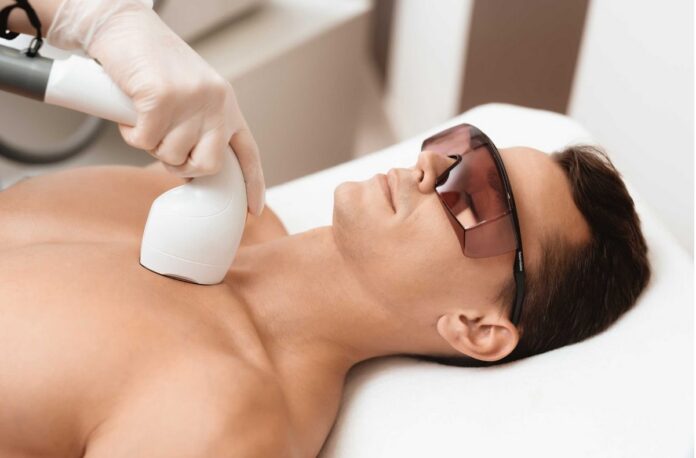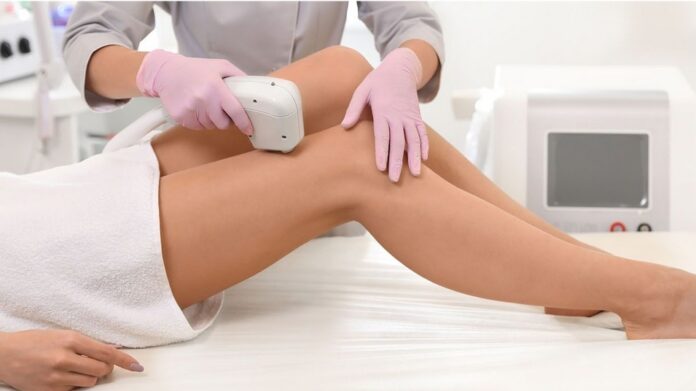Laser hair removal has become a popular and effective solution for people seeking long-lasting hair reduction. This non-invasive procedure promises smooth, hair-free skin, making it an attractive alternative to traditional hair removal methods. Before undergoing the treatment, you should complete a laser hair removal consent form, which ensures that you fully understand the process. In this guide, we’ll provide an in-depth understanding of the procedure, helping you make an informed decision about this treatment.
How Laser Hair Removal Works
The basic science behind laser hair removal lies in the targeted destruction of hair follicles. During the procedure, a concentrated beam of light is emitted, which is absorbed by the melanin (pigment) within the hair. This absorption generates heat, which then damages the hair follicle and delays future hair growth. Over a series of treatments, hair becomes progressively finer and sparser until the desired level of hair reduction is achieved.
Several types of lasers are used in hair removal, each with its unique wavelength and suitability for different skin types. The most common laser types include:
- Alexandrite laser: Effective for light to olive skin tones, this laser has a shorter wavelength and provides rapid treatment for larger areas.
- Diode laser: Suitable for light to medium skin tones, the diode laser offers deep penetration and is effective for coarse hair.
- Nd: YAG laser: This laser, designed for all skin types, including dark skin tones, has a longer wavelength, allowing for safe and effective treatment without damaging the surrounding skin.
- Ruby laser: Ideal for light skin tones with fine hair, this laser has a longer treatment time but is gentle on the skin.
A professional consultation is essential for determining the best laser for your skin tone and hair type, ensuring optimal results and safety during the procedure. You will probably need multiple procedures, so look for a salon nearby. If you live in Nevada, you can explore laser hair removal Las Vegas and see which ones are the best regarding references.
Benefits of Laser Hair Removal
Laser hair removal offers several advantages over traditional hair removal methods, making it an increasingly popular choice for those seeking smooth, hair-free skin:
- Long-lasting hair reduction: With multiple treatments, laser hair removal provides long-lasting hair reduction, resulting in finer and sparser hair growth. This makes it an ideal solution for those tired of the constant upkeep associated with other hair removal methods.
- Precision targeting: The laser technology allows for precise targeting of hair follicles without damaging the surrounding skin, ensuring effective and safe treatment.
- Reduced ingrown hairs and irritation: Unlike waxing, shaving, or plucking, laser hair removal significantly reduces the risk of ingrown hairs and skin irritation, providing a more comfortable experience.
- Cost-effectiveness over time: Although the upfront cost of laser hair removal may be higher, the long-term savings from reduced maintenance and the elimination of other hair removal methods make it a financially sound investment.
Preparing for Laser Hair Removal
Proper preparation is key to ensuring a successful laser hair removal experience:
- Consultation with a professional: Schedule an initial consultation with a qualified technician to discuss your goals, assess your skin and hair type, and determine the most appropriate laser technology for your needs.
- Avoid sun exposure, waxing, and plucking: In the weeks leading up to your treatment, avoid sun exposure, waxing, and plucking to prevent skin damage and ensure the effectiveness of the laser.
- Shaving and skin cleansing: On the day of your appointment, shave the treatment area and cleanse your skin to remove any oils, lotions, or makeup that may interfere with the laser.
The Laser Hair Removal Procedure
A typical laser hair removal session involves the following steps:
- Your technician will apply a cooling gel or device to the treatment area to minimize discomfort and protect the skin.
- The laser will be adjusted according to your skin and hair type, and the technician will perform a test spot to ensure the appropriate settings are used.
- The technician will then guide the laser handpiece over the treatment area, delivering pulses of light to the hair follicles.
- After the session is complete, the cooling gel will be removed, and a soothing cream may be applied.
The duration of each session varies depending on the size of the treatment area but generally takes between 20 to 60 minutes. For optimal results, multiple sessions (typically 4-8) spaced 4-6 weeks apart are required.
Aftercare and Recovery
Post-treatment care is crucial for optimal results and minimizing potential side effects:
- Cooling and soothing: Apply a cold compress or soothing gel (such as aloe vera) to alleviate any discomfort and reduce redness or swelling.
- Avoid sun exposure: Protect the treated area from direct sunlight and wear sunscreen with a high SPF to prevent skin damage or pigmentation changes.
- Refrain from waxing or plucking: Allow the hair to fall out naturally over the next few weeks, and avoid waxing or plucking during this time.
- Follow your technician’s recommendations: Adhere to any specific aftercare instructions prescribed by your technician to make sure you have a smooth recovery and optimal results.
Side Effects and Risks

Although laser hair removal is generally safe, some potential side effects and risks may occur:
- Redness and swelling: Temporary redness and swelling are common but typically subside within a few hours or days.
- Discomfort or pain: Some patients may experience mild discomfort or pain during the procedure, which can be managed with a cooling gel or device.
- Skin pigmentation changes: In rare cases, laser hair removal may cause temporary or permanent lightening or darkening of the skin, particularly in those with darker skin tones or those who don’t follow proper sun protection measures.
- Burns or blisters: Improper laser settings or unqualified technicians can result in burns or blisters. Ensure your technician is experienced and certified to minimize this risk.
Wrap-up
Laser hair removal offers numerous benefits over traditional hair removal methods, including precision targeting, reduced ingrown hairs, and cost-effectiveness over time. To ensure a successful experience, prepare for the treatment and follow proper aftercare instructions. By understanding the process, risks, and potential outcomes, you can make an educated decision about whether laser hair removal is a good fit for your needs. With the right approach, you can enjoy the confidence and freedom that comes with effortlessly smooth skin.







![Calgary’s Hottest Neighborhoods for Luxury Homebuyers [2024]](https://thewashingtonote.com/wp-content/uploads/2024/04/Calgary-324x160.png)



